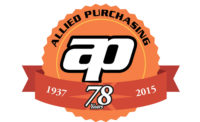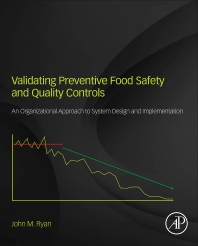Crisis preparedness demands supplier-customer cooperation
It is essential to establish a crisis preparedness plan with supply chain partners before any crisis event takes place. Here are some critical guidelines to follow.

Over the four years the U.S. Dairy Export Council has been working with U.S. dairy processors to build an overseas crisis readiness program, we’ve learned much. Companies that are “early movers” in a crisis situation typically resolve crises more quickly with fewer missteps than those late to the game. Tailoring your crisis response to specific countries and cultures can mean the difference between a successful resolution and a ruined reputation. And — the topic of this column — establishing a crisis preparedness plan with key supply chain partners prior to any crisis event is essential to a positive outcome.
Case in point: Fonterra Cooperative Group’s handling of its 2013 botulism false alarm. With multiple in-depth post-mortems detailing the company’s flawed response to the incident (which involved whey powder suspected of being tainted with Clostridium botulinum), the case contains critical lessons for the U.S. dairy industry.
One of the most telling insights comes from an independent inquiry report that noted the company “did not effectively coordinate its actions with those of the ministry, Danone (one of its customers) and the government during the crisis.” The independent inquiry went on to attribute Fonterra’s woes to “uncoordinated response to the recall and the resulting communication uncertainty with fact and speculation becoming blurred.”
Here’s the bottom line: If there is no coordination between partners touched by a food safety incident, it slows the response time and impedes the delivery of critical information to consumers. Non-existent or poor coordination has significant lasting effects on reputation: It makes a company look incompetent and careless or possibly even guilty and purposely hiding something.
Determining responsibilities
Coordinating crisis response is a difficult task, particularly among the complex, fragmented global supply chains of today. Over the past year, USDEC conducted in-depth interviews with a dozen executives from all areas of the supply chain to identify best practices for strengthening supplier-customer cooperation for preparing and responding to crises. We also studied best practices for joint crisis planning and response from other industries.
Here’s what we learned: While many in the dairy supply chain agreed that joint planning and response are critical, few were engaging their partners in this way. Interviewees said knowing how to start this conversation was a significant challenge and that the conversation was likely different depending on the nature of the customer-supplier relationship.
A critical part of any joint plan is establishing a framework. Based on interviews and research, we have identified the following guidelines for inclusion in pre-agreements and communication protocols:
- Clearly establish roles, detailing the circumstances where one partner leads and others support.
- Decide which organization will be responsible for managing (and paying for) the logistical requirements of crisis communication.
- Assign responsibility for drafting and ultimately controlling message content or plan for a cooperative message development and delivery process for deciding on key messages.
- Jointly determine appropriate media strategy and tactics.
- Establish who will respond and how to respond to those affected, including the tools used for communicating the messages — whether it be a toll-free hotline, email, websites, social media or other means.
- Establish agreed-upon approval processes including specific timelines in which approvals are required.
- Decide who will be responsible for creating, maintaining and distributing the joint situation management plan and scheduling briefings.
Delivering mutual benefits
The process brings benefits and value for both suppliers and customers. We are seeing customers instigating contact, saying, “We want to have in place some kind of crisis response plan” because they are concerned about what might be said to the media and the potential for a situation spinning out of control.
Talks begin by outlining potential risks in different scenarios or conducting a vulnerability study to determine the threats and problem areas. Initial discussions should establish a set of agreed-upon guiding principles; for example, giving priority to public health; using compatible or similar protocols, data or language to lower the chances of confusion or acting at cross-purposes; or specifying issues and incidents that you will manage jointly. Then you build the protocol around those guiding principles.
How you codify the protocols depends on the nature of your relationship. Transactional relationships might simply entail contractual provisions clearing potential response obstacles to your company’s response. Strategic, long-term supplier-customer relationships, particularly those in critical markets, will benefit from a formal memorandum of understanding and joint planning and training sessions.
USDEC believes joint crisis planning will strengthen the entire industry’s ability to respond to a crisis. It starts with suppliers and customers getting together, sharing crisis plans and identifying areas of compatibility, and agreeing on priorities. Eventually, we want it to evolve into standard industry practice aimed at building, protecting and defending U.S. dairy’s reputation, markets and future growth.
Looking for a reprint of this article?
From high-res PDFs to custom plaques, order your copy today!







